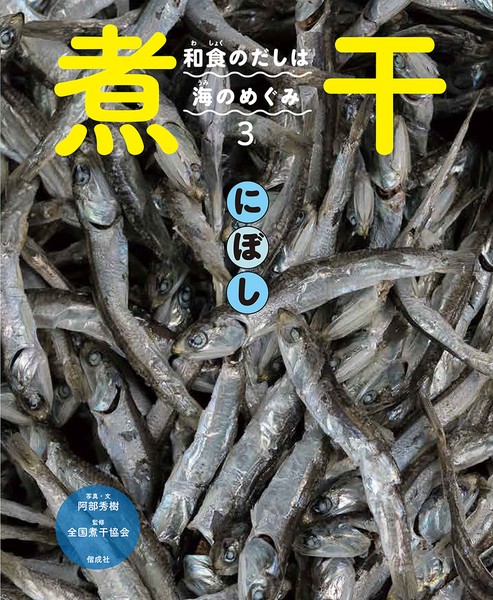


Vendor Profile
Kaisei-sha Publishing Co., Ltd.
| Address | 3-5 Ichigayasadoharacho Shinjukuku Tokyo, JAPAN ZIP:162-8450 |
|---|---|
| Representative Name | Yuuzi IMAMURA |
| Annual Revenue | closed |
| No. of Employees | 40 |
| Web Site URL | |
| SNS |




People Also Searched
Other items from this category
SD item code:9086576
| Detail | Price & Quantity | ||
|---|---|---|---|
| S1 |
Supervision: National Niboshi Association / Text*Photo: Hideki Abe
監修:全国煮干協会 / 文・写真:阿部秀樹
(No.436830)
JAN:978-4-03-436830-5
|
(No.436830)
JAN:978-4-03-436830-5
Wholesale Price: Members Only
1 pc /set
In Stock
|
|
| Dimensions |
|---|
|
29cm x 24cm
|
| Specifications |
|---|
|
Country of manufacture: Japan
Material / component: Paper
Year of manufacture: 2021
Product tag: Attached
|
Description
| In 2013, Japanese food was registered as an Intangible Cultural Heritage of Japan by UNESCO (United Nations Educational, Scientific and Cultural Organization). Dashi is the foundation of Japanese food seasoning, and it is the role of dashi to combine ingredients into a dish without losing their deliciousness. Kelp is made from kelp, bonito flakes from bonito, and sardines from dried sardines. In this sense, dashi in Japanese cuisine is a blessing from the sea. Volume 3 [Niboshi] introduces in an easy-to-understand manner, with beautiful and abundant photographs, what kind of fish sardines are and how to get them, how to make niboshi, various processed sardine products, the recently popular "ago-dashi" (dashi made from niboshi of flying fish), the history of niboshi, various types of niboshi, how to make niboshi-dashi, sardine dishes, the crisis approaching sardines in the sea, etc. The book is beautifully and abundantly illustrated with photographs. |
More
| Shipping Method | Estimated Arrival |
|---|---|
| Sea Mail | From May.19th to Jul.21st |
| Air Mail | From May.1st to May.5th |
| EMS | From Apr.30th to May.5th |
| Pantos Express | From May.2nd to May.7th |
| DHL | From Apr.30th to May.2nd |
| UPS | From Apr.30th to May.2nd |
| FedEx | From Apr.30th to May.2nd |
|
Some trading conditions may be applicable only in Japan.
*Important Notice
Under the resale price maintenance system, publishers are legally allowed to set the selling price of books. We ask that your company also adhere to the fixed sales price (in Japan). |
Other items from this category:
Kelp is made from kelp, bonito flakes from bonito, and sardines from dried sardines. In this sense, dashi in Japanese cuisine is a blessing from the sea.
Volume 3 [Niboshi] introduces in an easy-to-understand manner, with beautiful and abundant photographs, what kind of fish sardines are and how to get them, how to make niboshi, various processed sardine products, the recently popular "ago-dashi" (dashi made from niboshi of flying fish), the history of niboshi, various types of niboshi, how to make niboshi-dashi, sardine dishes, the crisis approaching sardines in the sea, etc. The book is beautifully and abundantly illustrated with photographs.
だしといえば、まず「昆布」「鰹節」「煮干」の3つが思いうかびますが、昆布は海藻のコンブ、鰹節は魚のカツオ、煮干は魚のイワシと、どれも、もともとは海の生きものを加工してつくるものです。その意味で「和食のだしは海のめぐみ」だといえるでしょう。
第3巻『煮干』では、イワシがどんな魚で、どうとるのか、煮干はどうつくるのか、イワシのいろいろな加工品、近ごろ話題のあごだし(トビウオの煮干でとるだし)、煮干の歴史、煮干のいろいろ、煮干だしのとり方、イワシ料理、海のイワシに迫る危機などを、美しく豊富な写真を使って、わかりやすく紹介します。